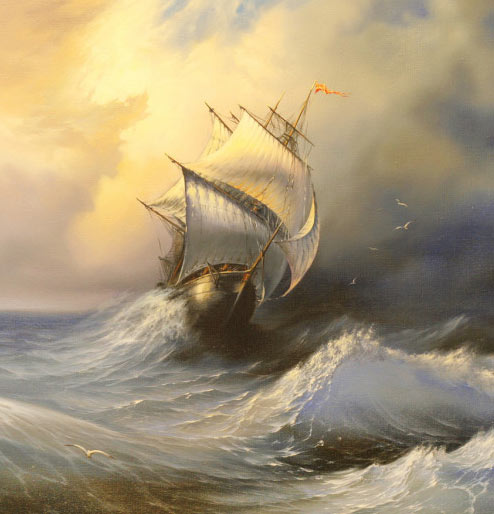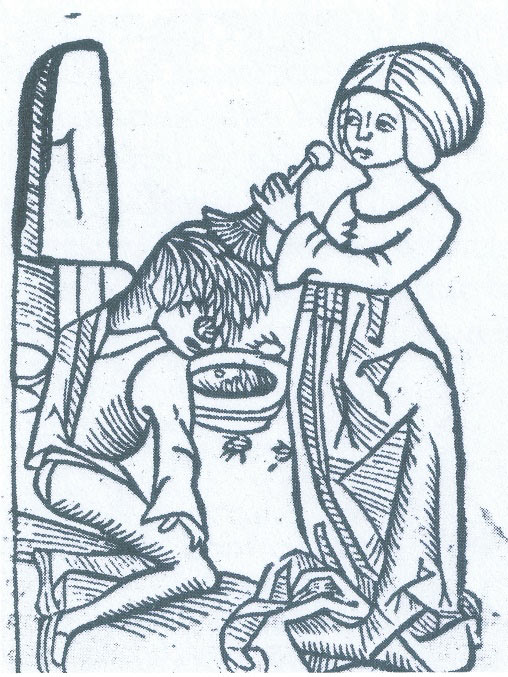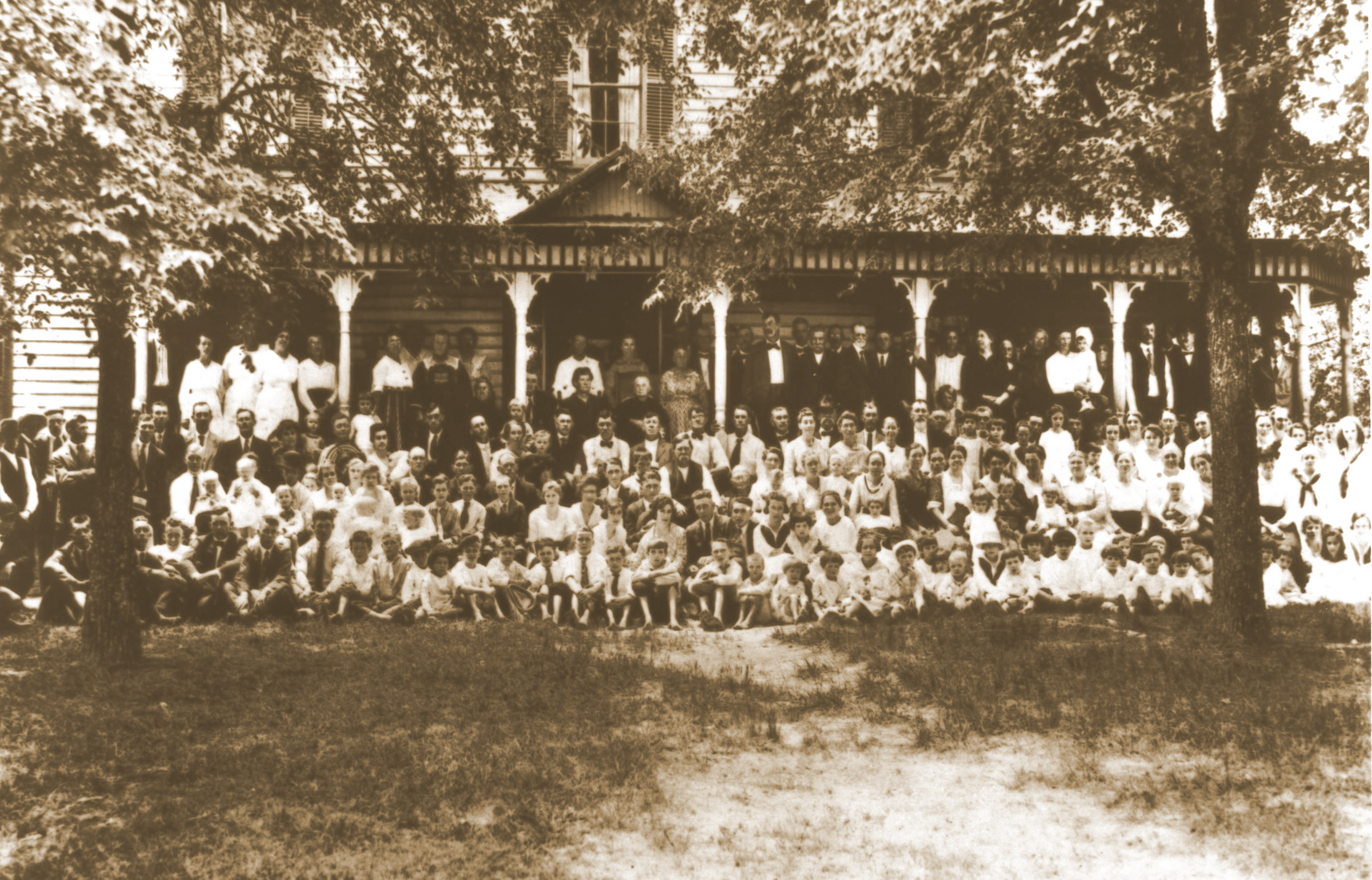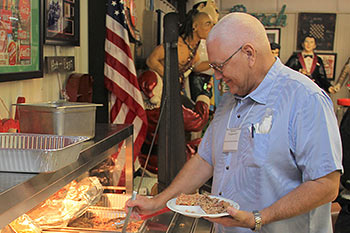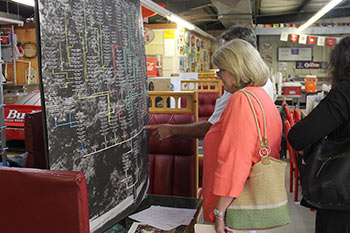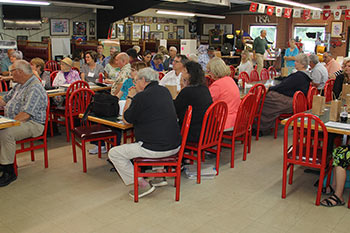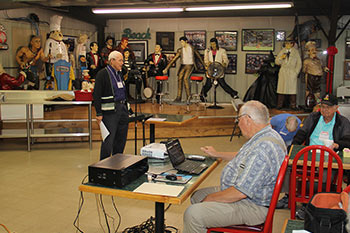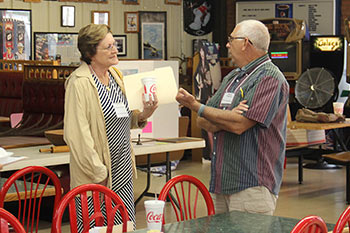CHAPTER 8
1738 OCEAN VOYAGE IN "THE YEAR OF THE DESTROYING ANGELS"
In 1998 Klaus Wust in Beyond Germanna, Part I, Volume 10, Number I, wrote a very interesting article entitled "The Year of the Destroying Angels – 1738" detailing some of the reasons 1738, the year our Lippards emigrated from Europe, was the worst year for immigration to Pennsylvania from Rotterdam. Some of the information in this section is based upon his article and other substantiating sources. Other information is facts that were typical for immigrant voyages to the colonies at that time. Additionally, Wust claims that although the Queen Elizabeth's log, which lists the Lippards, states that the passengers were from the Palatinate, there were also a number of passengers from Kraichgau (Baden Wurttemberg) and Zweibrucken.
Each year the British shipping merchants of Rotterdam's ships left the American colonies in the spring carrying goods grown and produced in the colonies to Rotterdam. In mid-summer they sailed in the opposite direction transporting emigrants from Europe to the colonies. In this year, 1738, deteriorating conditions in Europe as well as greatly increased solicitation by "Newlanders" and the distribution of an increased number of leaflets generated more interest in relocation than ever before among the ordinary folk of Alsace, northern Switzerland, and south, central, and west Germany (such areas as today are referred to as the Palatinate, Baden, northwest Bavaria, Wuerttemberg, and Hessen). As a result, in early spring word reached the merchants and city officials of Rotterdam that emigrants, thousands more of them than expected, were traveling down the Rhine River toward Rotterdam.
Panic began to set in among these merchants and officials as they could foresee a potential disaster looming. How could they avoid a major catastrophe -- illness and even death from exposure, starvation, and disease among this huge number of emigrants who were arriving months too early when no preparations had been made for them? How, likewise, could they transport such a huge number to the colonies when the fleet was not nearly large enough and not even due to arrive back in Rotterdam for months?
Much to their credit, many of the Dutch churches came to the aid of the travelers as best they could. The British shipping merchants themselves took two actions. First, they ordered additional ships that normally traveled other routes carrying cargo to and from English ports to be at their disposal. The Hope Company, owners of the Queen Elizabeth upon which our Lippards traveled, sent eight additional ships, some from their own fleet and some that they chartered. Interestingly, two of Hope's ships which launched together in 1738 into the Atlantic Ocean, the Queen Elizabeth and the Glasgow, transported the Lippards on the first of the two and the second transported the Neiman family including Heinrich who married Anna Martha Lippard once in Pennsylvania and the Michael Braun family who were friends of the Lippard family in North Carolina. Did these three families all come from the same area of Germany or meet each other while awaiting transport in Rotterdam? Maybe we will learn more as I continue research in Germany.
As noted in Conrad's imaginary letter, the 1738 voyage was the first of the Queen Elizabeth and her captain Master Hope bearing emigrants from Rotterdam to Philadelphia. In fact, Master Hope and his Queen Elizabeth never repeated such a voyage. Second, the merchants in Rotterdam realized that they had to refit the regular ships to accommodate more passengers. To do so they had the tiny bunks built upwards, usually as many as three bunks high. With so many additional passengers and the need to transport additional food to feed them, there obviously was no room for everyone's chests and other goods. Thus, much of the cargo had to be left behind with the hope of its delivery by other ships at later dates, or taken out of chests and stowed in every available nook and cranny.
According to the newspaper Rotterdamse Courant, five of the Hope's ships were prepared to sail by 22 June. These were the Queen Elizabeth, upon which our Lippards traveled, the Thistle, the Oliver, the Winter Galley, and the Glasgow. Imagine our family's fear and trepidation as well as excitement as this little group of ships sailed from Rotterdam west across the stormy North Sea toward England and the English Channel. The Queen Elizabeth and the Winter Galley headed for Deal, just at the near entrance to the Channel. The Glasgow, the Thistle, and the Oliver (which for some reason did not make the trans-Atlantic crossing that year) entered the Channel and headed for Cowes on the Isle of Wight just off the south English coast. It was not a pleasant beginning to their long voyage as violent storms tossed them to and fro on what became a 3 week journey to Deal and a five week journey to Cowes. All English ships were required to stop in England for customs clearance as required by the Navigation Acts, to take on final supplies for the Atlantic crossing, and to wait for favorable winds. At this point the main voyage, lasting anywhere from eight to twelve weeks, began. If the Queen Elizabeth did leave Rotterdam within a few days of 22 June, took three weeks to arrive at Deal, spent another several weeks at Deal and sailing the Channel, they may have entered the Atlantic Ocean sometime during the last week of July. In that case, if they arrived in Philadelphia on the 16th of September, they spent at least six to seven weeks crossing the Atlantic. Thus, in total, our family was most likely aboard the Queen Elizabeth, from Rotterdam to Philadelphia, for a total of over twelve weeks or more than three months! Add to that the probable two months they spent traveling in Germany and down the Rhine River to Rotterdam, and it becomes apparent that our little band of Lippards spent between five and six months of 1738 making this journey to their new lives in America.
Let us again imagine what such a voyage might have been like. We must remember that the family is traveling with Conrad, rather elderly-for-the-time at age fifty-eight. Also with them are perhaps at least five children under the age of nine. Those are Wilhelm and Catharine's four boys and the child Elisabeth Brown traveling with Conrad and his wife Anna Maria. Catharine is either pregnant or has an infant girl. Try imagining that you are one of our folks on this treacherous trans-Atlantic journey.
- Imagine the dangers to small children on a small sailing ship crossing the ocean.
- Imagine the very practical problems of sanitation, including having on board your own two or more children as well as numerous other children still not toilet trained.
- Imagine each person's being allotted a two foot by six foot sleeping space, many consisting of upper bunks.
- Imagine a sparse diet of primarily salted meat, bread, and water for several months. Sometimes other foods that would keep reasonably well for months such as flour, rice, and dried peas and beans were available, but the grains often became infested with vermin. After several weeks, the drinking water often developed algae
- Imagine seeing your fellow travelers die from the hardships of the journey: disease, starvation, lack of sanitation, and accidents. The elderly, pregnant women, and small children are especially vulnerable.
- Imagine being packed below deck with hundreds of terrified and sea-sick passengers as your small ship is tossed wildly by the waves and beat mercilessly by storm-driven wind and rain.
- Imagine having on yourself or seeing on others lice so thick they must be scraped off. Lice carry a bacillus that causes the disease typhus. These ships carrying German, Alsatian, and Swiss immigrants were so often ravaged by typhus that the disease was called "Palatinate fever." Within two weeks fifty to seventy percent of the stricken persons either lived or died.
In Gottlieb Mittleberger's 1750 booklet entitled Journey to Pennsylvania, he quotes a portion of Johannes Kunchel's (Kunckel) 1748 letter (translated from German) where Kunckel describes in detail the horrors of the journey from Florsbach, Hesse, Germany, to Philadelphia. This 1748 letter by Johannes Kunchel is also quoted by James E. Kunkle and W. M. Kunkel, "A Gathering and Mingling of Early Kunkel/Kunkle/Gunkel Families". Mittelberger returned to Germany to discourage other Germans from emigrating because of these horrors. However, Kunckel, in addition to pointing out the horrors in his letter, also expresses his satisfaction with his new home in Pennsylvania and is grateful to God for his deliverance. Additionally, he finds comfort in the customs and atmosphere of his new home and neighbors. First he lived in Philadelphia township, Philadelphia County according to PA Earl Census Index, then later moved to Westmoreland County where he wrote his letter, and perhaps even later moved to Heidelburg township, Northampton (now Lehigh County) where he died in 1774. Gary, Margaret, and my Rumple, Hunsucker, and Neff ancestral families lived there during the same time period. It is not clear that Kunckel ever sent his letter back to Germany.
If you are interested in reading Johannes Kunchel's 1748 translated letter which includes many more detailed experiences and vivid descriptions of this trans-Atlantic voyage typical of what our Lippard ancestors most probably encountered, see this link below.
https://www.genealogy.com/ftm/g/o/o/Margaret-A-Goodlin/FILE/0014page.html
Our Lippards' Voyage
Mittleberger returned to Germany to warn his countrymen of the difficulties of migration.
Storms did wrack the immigrant ships in that summer of 1738. Additionally, because of the terribly crowded conditions and lack of adequate nourishment and sanitation, 1738 was a terrible year for outbreaks of disease, with typhus, spread by lice, being the most common and deadly. On 19 October, the third ship's captain, the captain of the Robert and Alice, to transport immigrants to Philadelphia that season wrote a letter back to Germany. In his letter, later published in the Rotterdamse Courant, the captain rejoiced that only 18 people on his ship had died; however, he also reported that the other four ships he sailed with had lost a total of 425 passengers – 140, 115, 90, and 80. As the Queen Elizabeth was the next of Hope's ships to arrive in Philadelphia, one week after the Glasgow, we may conjecture that one hundred forty people aboard it died. Keeping in mind that 324 of the Queen Elizabeth's passengers arrived safely, we can see that if 140 died at sea, the ship experienced a loss of over 32 percent! Thus, it seems fair to surmise that some of our Lippard family may have died on the voyage to their new home in Pennsylvania.
By 1738 the colony of Pennsylvania required that each ship's captain submit a log of the passengers aboard his ship because of a growing alarm concerning so many unknown and unregistered aliens streaming into Philadelphia's port. Most captains, however, did not prepare their logs until almost to port. They hardly ever listed passengers who died at sea -- a large mortality rate would have been bad for business -- but if passengers died after the mid-point of the journey, family or friends were required to pay the dead person's passage. Although no official record exists, it is estimated that more than 2,000 passengers on the sixteen ships that sailed from Rotterdam to Philadelphia in 1738 died enroute. That is an average of 125 people per ship.
